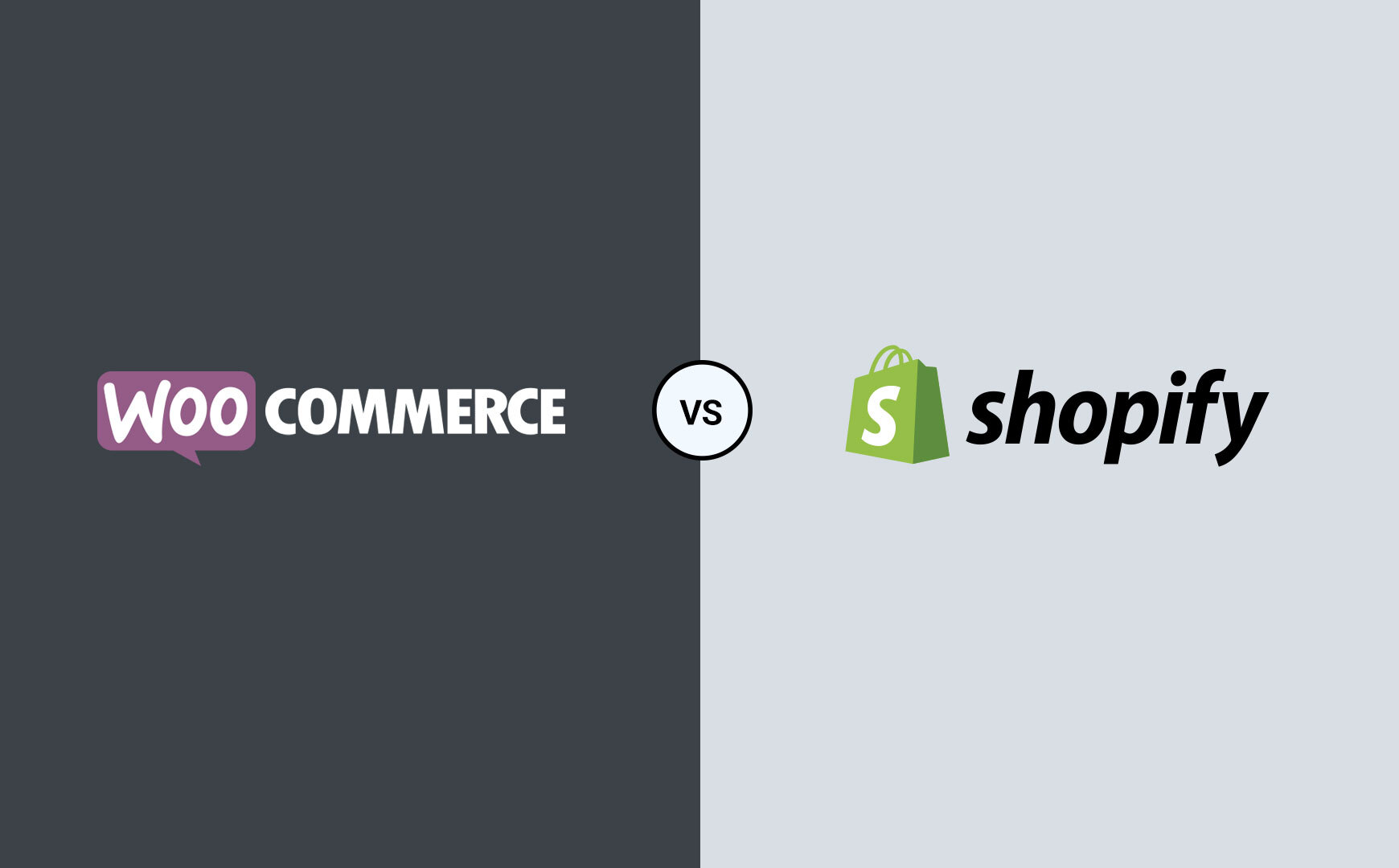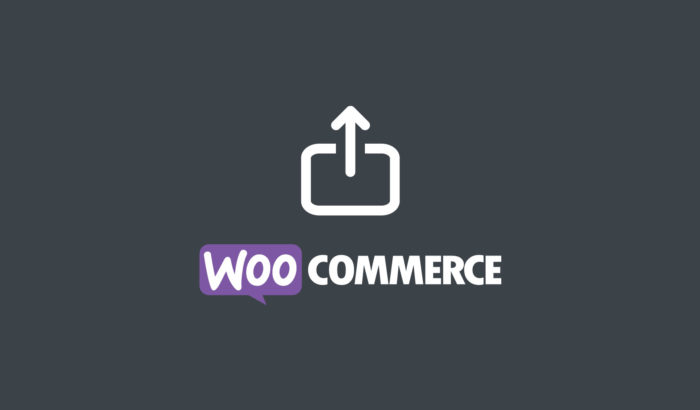With a combined market share of 47%, the two e-commerce platforms are two natural options for anyone looking into starting an online store. In this article, we will go through what you should take into consideration when you make your choice between these two giants. There are a lot of aspects to take into account and we recommend that you do your research, before making your pick. Let’s go!
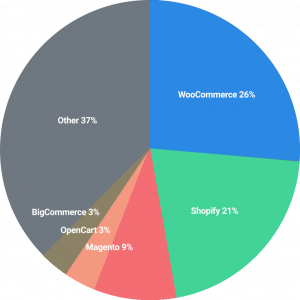
Table of content:
- What is WooCommerce and how does it differ from Shopify?
- What is Shopify and how does it differ from WooCommerce?
- Factors to take into consideration when choosing e-commerce platform
- What kind of functionality do you need for your online store?
- How much knowledge do you have?
- Which solution is most time-efficient?
- What does it cost?
- Advantages with WooCoommerce
- Disadvantages with WooCommerce
- Advantages with Shopify
- Disadvantages with Shopify
- When should you use WooCommerce?
- When should you use Shopify?
- Final Words
What is WooCommerce and how does it differ from Shopify?
WooCommerce is a free e-commerce tool that is built on the world’s most popular CMS WordPress. Both WooCommerce and WordPress are built on open source, which means that anyone can contribute to improving the software in different ways. There are over 55 000 WordPress-plugins available for download and these are all created by independent businesses and individuals.
What is Shopify and how does it differ from WooCommerce?
Unlike WooCommerce, Shopify is closed source, meaning that only Shopify and companies they have approved, are allowed to create functionality for their platform. This kind of setup comes with both advantages and disadvantages. One advantage is that almost all functionality maintains a high standard, while the disadvantage is the smaller supply and perhaps a lower top-level.
Unlike WooCommerce Shopify is not free.
Factors to take into consideration when choosing e-commerce platform
We will in this guide go through four important factors for you to consider; Functionality, level of knowledge, time and cost. There are advantages and disadvantages with both platforms, and we believe that this walkthrough will help you to make the right choice.
What kind of functionality do you need for your online store?
Thanks to its open source-solution, WooCommerce can offer a much greater supply of functionality, in forms of different plugins. To start with we suggest that you make sure that Shopify offers the functions and third-party solutions you need for your store. Otherwise, WooCommerce is probably a better choice, since they most likely will offer all the functionality you’re looking for.
Examples of important functionality and third-party solutions:
- Payment solution
- Shipping solution/3PL
- Solution for multiple languages
- Integration to your ERP system
- Integration to your accounting software (Finns det något annat namn för detta?)
WooCommerce and Shopify offer both plugins/apps which are free and which cost money.
Plugins at woocommerce.com
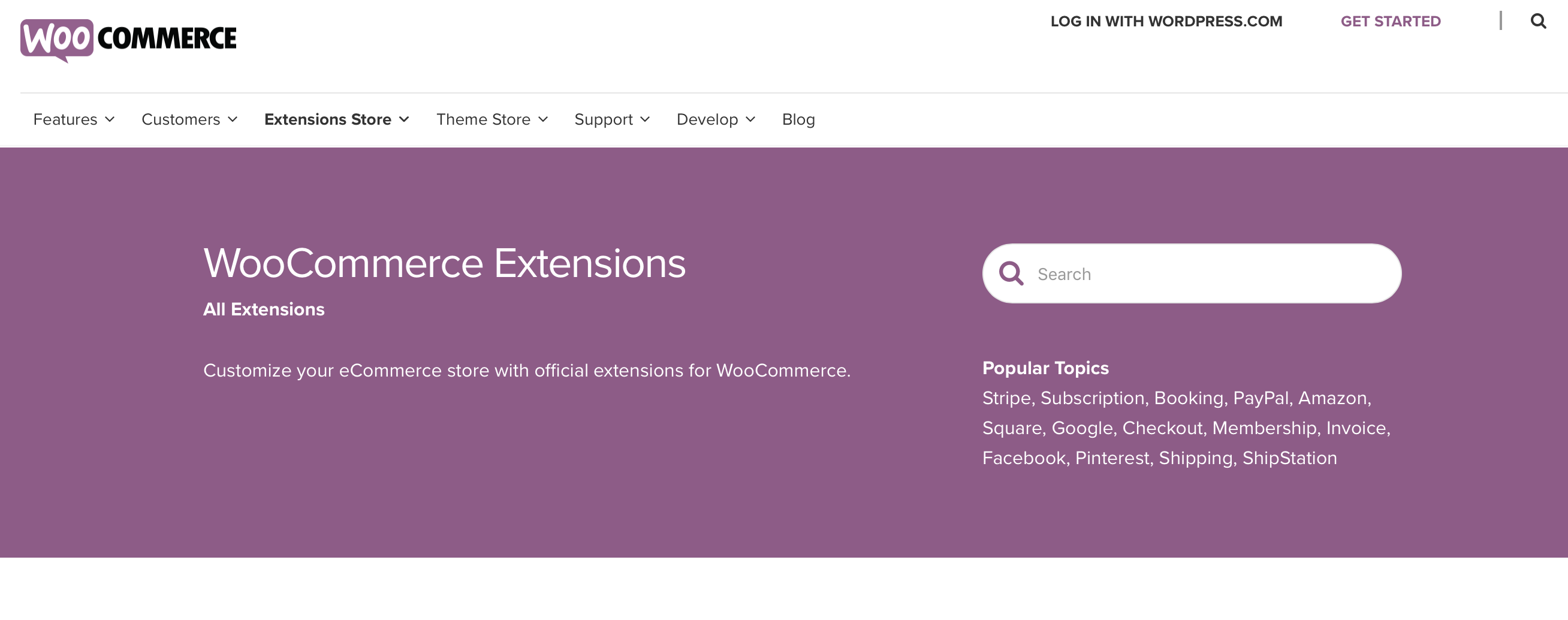
Apps at apps.shopify.com
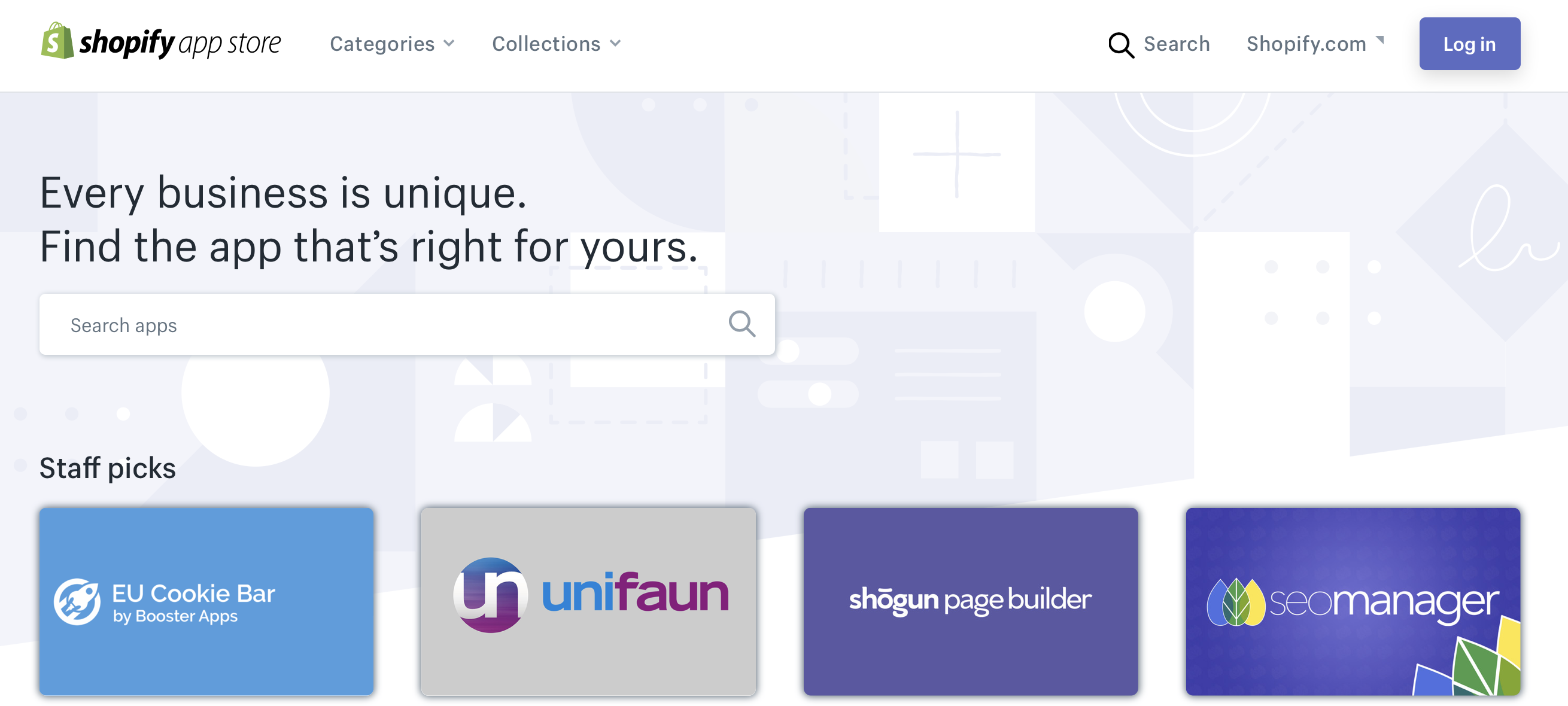
How much knowledge do you have?
The main reason behind the great success of WooCommerce is its user-friendliness. You can publish an ecommerce-store without any coding skills, and if you need help with anything, you can reach out to a big community. The vast majority of all WooCommerce users are self-taught and if you too like to learn things and develop yourself, you won’t have any problems running an online store with WooCommerce.

How easy is it to get started with Shopify then? The fact is that Shopify has an even lower threshold. They offer an all inclusive-solution where you can, as with WordPress, easily publish a website using their own themes and apps. You don’t need to worry about issues with compatibility since Shopify require their apps and themes to work with their software. At Shopify, you also get support and web hosting.
If you choose to create your online store with WooCommerce we recommend that you choose a hosting provider that offers managed WordPress hosting. With managed WordPress hosting you will get more extensive support, that has a deeper knowledge about WordPress and often is equal to the support you receive from Shopify. You also don’t have to worry about how your website performs, nor about downtime, since the web host will keep track of this for you.
Which solution is most time-efficient?
To get started with these platforms is generally a pretty smooth process, but if you don’t already have a website, you will probably be up and running slightly faster with Shopify. However, if you got a WordPress site since before, you can install WooCommerce directly in WP admin and start building your store in a couple of minutes.
To run the store is in many cases more time-efficient with Shopify, since you don’t have to update any themes or plugins by yourself, nor spend time on optimizing your hosting environment. Are you inexperienced and need a lot of help at the beginning you also can take advantage of their support.
If you use WooCommerce you don’t have access to any specific WooCommerce-support, but need to find the right answers on different websites and forums by yourself. Here too, you can save a lot of time if you choose managed WordPress hosting, which will offer you a support team that many times can help you with your challenges.
What does it cost?
A big difference between WooCommerce and Shopify is that WooCommerce is free, while Shopify has a monthly fee.

Shopify offers three default plans which cost $29, $79, and $299 per month. What sets the plans apart are, among other features, the number of user accounts, transaction fees, and delivery fees. Besides these three plans, Shopify also offers a budget plan called Shopify Lite and a massive plan named Shopify Plus.
Shopify Lite
Shopify gives you the opportunity to sell products at an existing website, or on social media platforms like Facebook and Instagram. It actually also works with WordPress and can be integrated with the plugin: WP Shopify. With Shopify lite you won’t get any new website or hosting, and can only create two user accounts.
The price for Shopify lite is $9 per month and should only be considered if you sell low volumes and run your store as a hobby.
Shopify Plus
If you choose Shopify for your online store, you will eventually be looking at an upgrade to Shopify plus. The pricing difference between Advanced Shopify and Shopify plus can be described as gigantic, considering the monthly fee of $2000.

Some features which are included in Shopify Plus:
- Global CDN
- 99.98% server uptime
- Improved preconditions for selling in multipl currencies and in different languages
- Lower transaction fees (1.6% + $0.35 per transaction)
- 24/7 priority Plus Support
If you plan to sell to different contries or need to improve your hosting-environment, you should be prepared to upgrade to Shopify plus and let your wallet take a small hit.
All online stores have different needs, but according to Shopify their customers generally upgrade to Shopify plus when they reach $800 000 in annual sales. Something is telling me that their sales team will reach out to you before that though 🙂
Transaction fees

Another fee that only comes with Shopify is their transaction fee, which is debited on every specific payment. The fee starts at 2.9% + 30¢ but gets lower the higher plan you use. If you would like to choose a different payment solution than Shopify’s, they also debit you an additonal fee for this. This fee starts at 2.0 % but also gets lower if you upgrade to a more expensive plan.
Let’s say that you use Basic Shopify and an independent payment solution. Then at least 4.9% of your total sales will be transaction fees to Shopify. Worth considering while you’re planning your budget.
WooCommerce doesn’t have any transaction fees, but be aware that the payment solution you choose will have a fee. Overall the transaction fee will be cheaper with WooCommerce, than with Shopify.
What does a theme cost?
Themes for WooCommerce and Shopify comes in different price ranges. Are you looking for a more comprehensive theme with a lot of functionality and positive reviews for your WooCommerce-store the price will be around $59. At Shopify, a theme like that cost $140. Both platforms offer free themes as well, but if you have serious ambitions with your store, you should not save money on this.
Themes for WooCommerce can be purchased at Themeforest
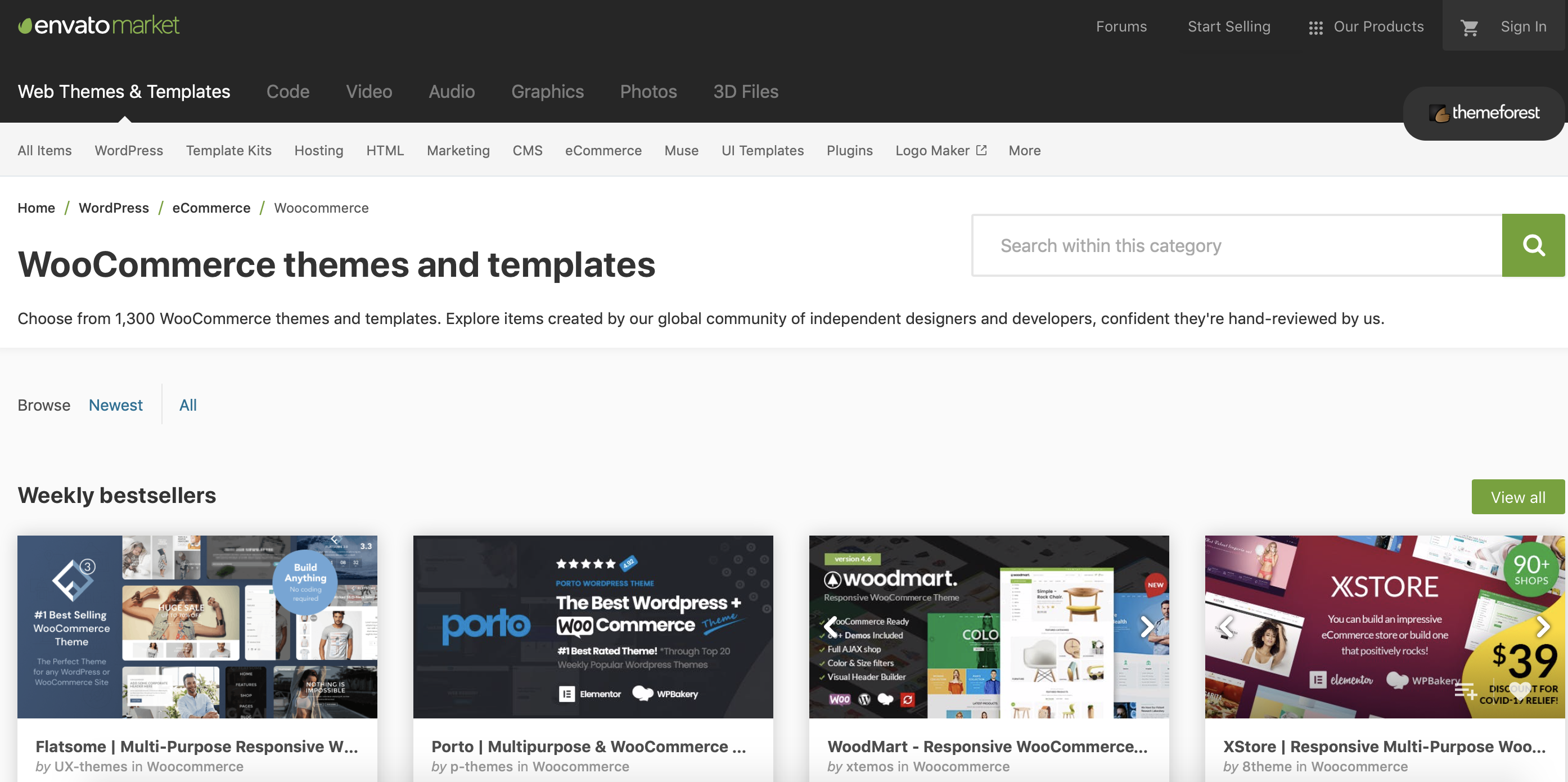
What other kinds of costs should you have in mind while budgeting for your e-commerce store?
Development costs – Will you need to hire developers and what would that cost you? The more popular your store gets, the more likely you will be to invest in new functions and integrations. Regardless if you use WooCommerce or Shopify you will have to hire consultants, unless you have the competence inhouse.
The opportunity to customize your store is bigger with WooCommerce, than with Shopify, and therefore there is a risk that you run into more scenarios, where you might need to hire external help. Don’t forget to take into consideration what your monthly fee would be at Shopify, running a website with the same functionality.
Hosting – What web hosting are you planning to use if you choose WooCommerce? The cost for your web hosting will be a recurring cost, so don’t forget to include this in your budget.
Plugins/Apps – The cost for your plugins/apps is hard to predict, since you probably don’t what exact functionality you need for your online store. If you have started planning what functionality that requires plugins/apps, you can find WooCommerce-plugins here: https://woocommerce.com/product-category/woocommerce-extensions/ and here: https://wordpress.org/plugins/. The Shopify apps are available here: https://apps.shopify.com.
WooCommerce advantages
- Full control – With WooCommerce you’re never limited. You can always customize your website exactly as you’d like it, and develop it based on your own needs.
- No fixed cost – WooCommerce is free to install and everything you need is a WordPress-website.
- Big community – WooCommerce also has the biggest community. Regardless the challenge you’re facing you will always be able find help in various Facebook groups, at websites and in different internet forums.
WooCommerce disadvantages
- Requires more knowledge – If you don’t have any experience of WordPress or basic coding, the journey of learning WooCommerce might be a little bit more difficult than with Shopify. Don’t be freightened though. All the information you need is available online. You just to spend some more time to develop your skills.
- Time consuming – In many cases a WooCommerce-store can be more time consuming, since you need to keep WooCommerce, plugins, and themes updated, to ensure their versions are compatible with each other.
- Too many options? – Some people reckon that the huge selection of plugins might be overwhelming and make it harder to make decisions.
Advantages with Shopify
- Easy to get started – With Shopify you don’t need any previous knowledge to get your new website running. It’s easy to buy your desired theme and apps directly at Shopify, and create your website with their website builder.
- No compatibility issues – Thanks to Shopify’s closed source-solution you don’t have to worry about compatibility problems since they create many of the apps themselves and only accept apps from carefully selected third-party companies.
You can simply rely on Shopify that your website will work after their software updates.
- Hosting is included – You don’t need to spend time and energy on finding a web host that matches your requirements.
Disadvantages with Shopify
- You’re limited – At Shopify you only have access to the functionality that Shopify and their selected third-party companies have created. You’re also tied up to a specific plan and as soon you need to upgrade, you will have to pay a higher fee.
- More expensive to expand internationally – If you want to take the next step and sell your products to multiple countries, we strongly recommend that you upgrade to Shopify plus, which has a monthly fee of $2000. Can you afford that cost?
- More expensive transaction fees – If you want to use a specific payment solution, Shopify will charge you extra for this.
When should you use WooCommerce?
- You have a WordPress website since before and like to learn new things.
- You like to have many options, and the freedom to customize your online store exactly as you want it.
- You’re planning on selling to multiple countries.
When should you use Shopify?
- If you’d like to get started quickly and don’t have any previous experience of WordPress.
- You’d like a time-efficient solution that is easy to maintain.
- You would like to have access to support that can help you with your website.
Final words
There are many things to take into consideration when choosing a e-commerce platform, and hopefully, you have now figured out what’s important to you, and thereby also can choose the right solution.
We at Templ are, as usual, very grateful for all the feedback we receive. Please share your thoughts below, or write a line or two in our chat.
